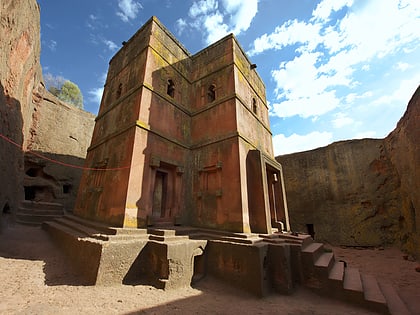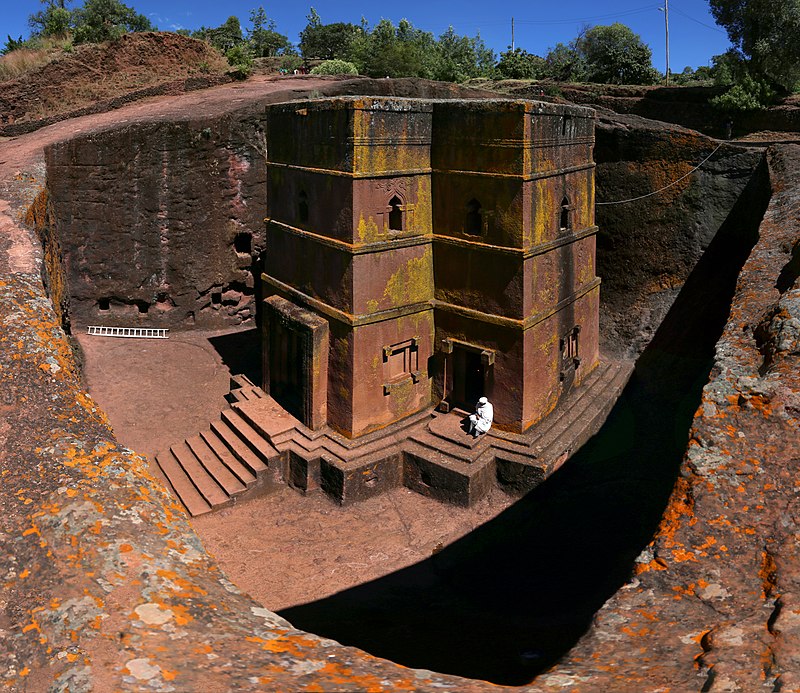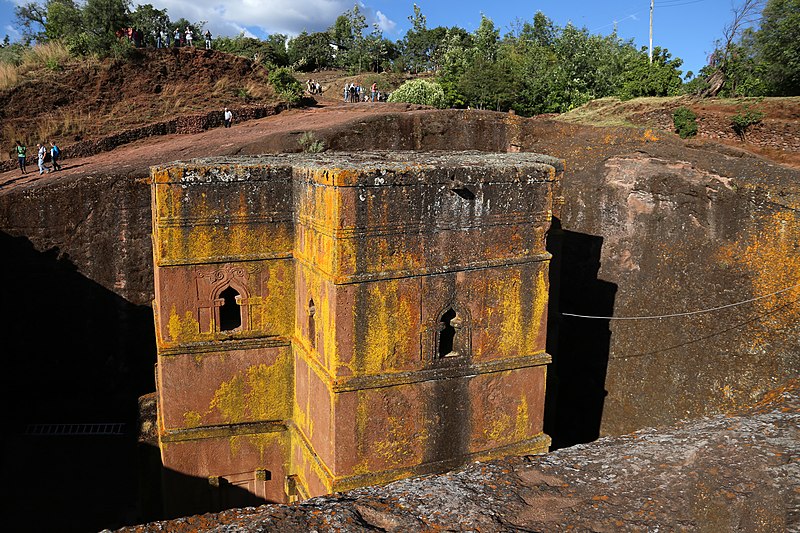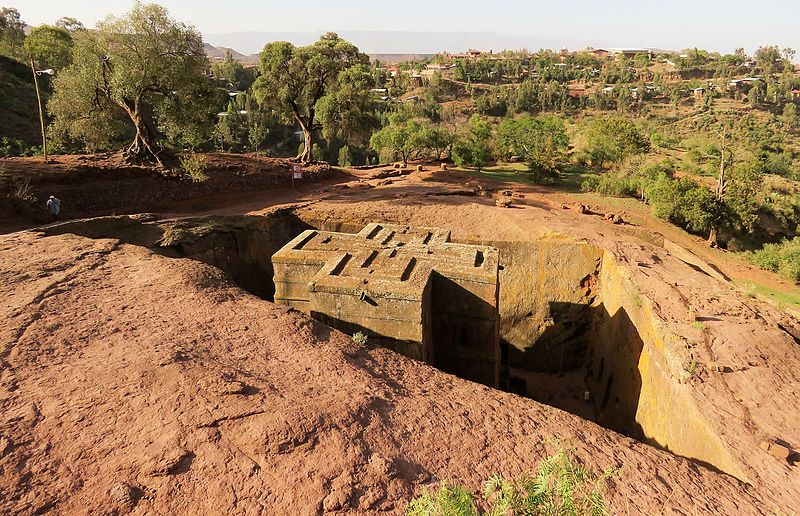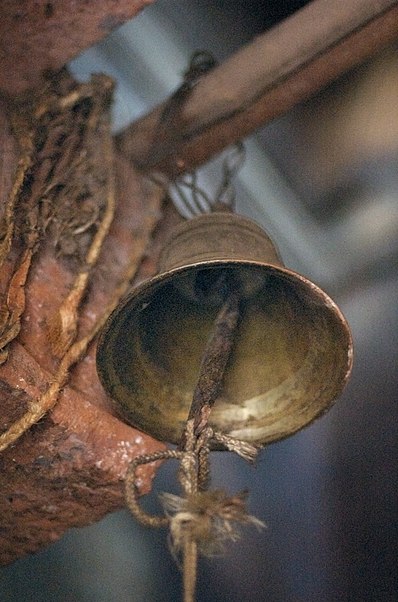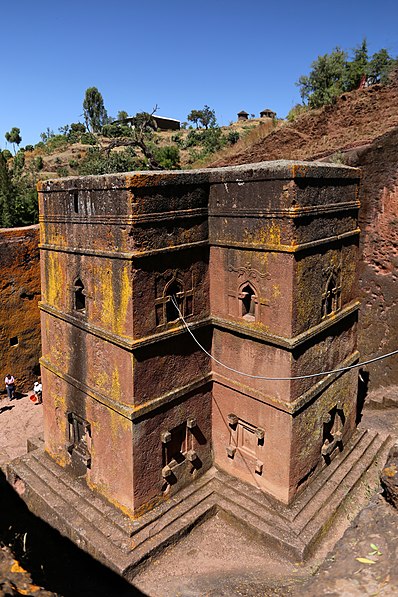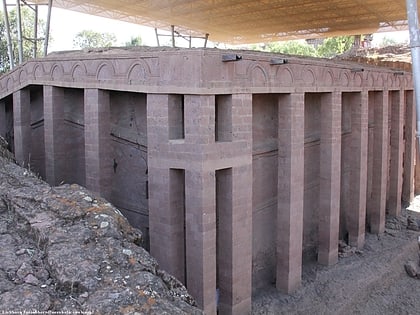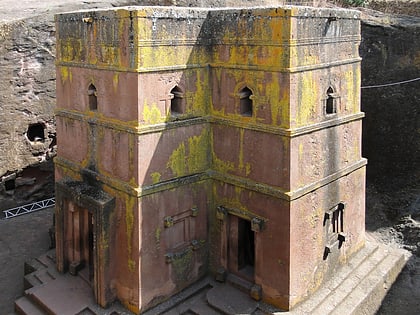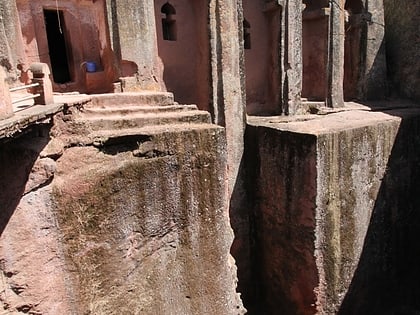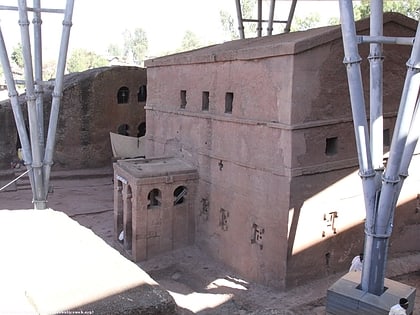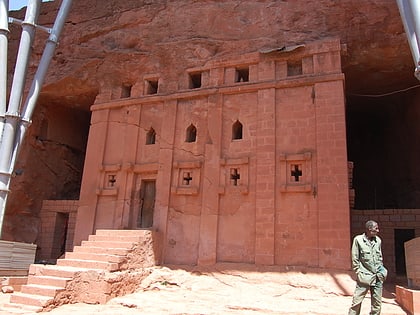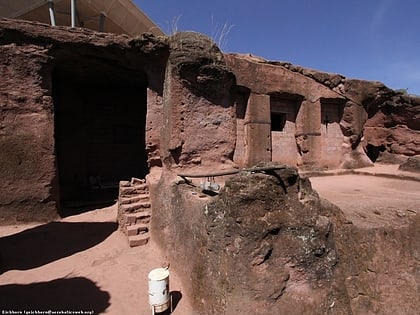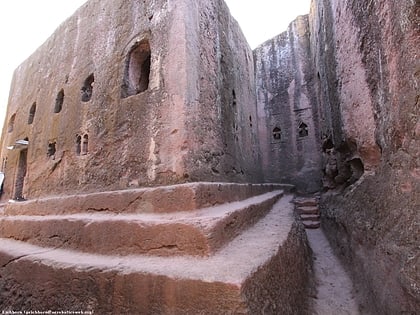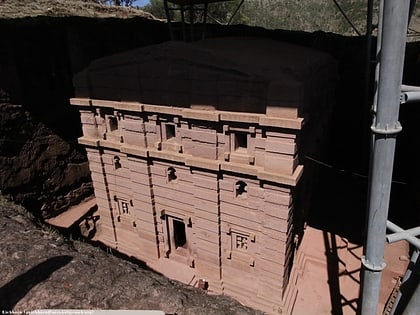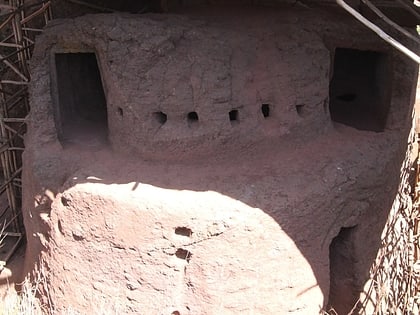Church of Saint George, Lalibela
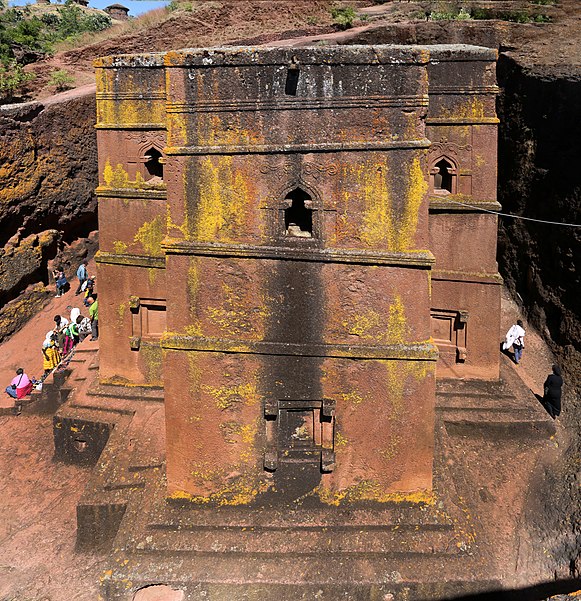
Facts and practical information
Nestled in the heart of the Ethiopian highlands lies the Church of Saint George, an architectural marvel carved directly into the bedrock of the city of Lalibela. This monolithic church, also known as Bete Giyorgis, is a pinnacle of rock-hewn craftsmanship and a spiritual beacon for the Ethiopian Orthodox Tewahedo Church.
Constructed in the early 13th century under the auspices of King Gebre Mesqel Lalibela, the Church of Saint George is renowned for its cross-shaped design and elaborate labyrinth of tunnels and passageways. Standing as a testament to the devotion and engineering prowess of the Zagwe dynasty, the structure is part of a larger cluster of eleven churches, all sculpted from the living rock of the region.
The church is situated below ground level and is accessed by a trench representing the River Jordan. Its walls rise majestically, with the roof forming a level ground with the surrounding terrain, creating a subterranean atmosphere of divine seclusion. Inside, the church is adorned with sacred carvings, religious icons, and vibrant frescoes, further accentuating its hallowed purpose.
As a UNESCO World Heritage site, the Church of Saint George is a cherished pilgrimage destination and a symbol of Ethiopia's rich religious history. Visitors from around the world flock to Lalibela to witness this unique form of ecclesiastical architecture and to partake in the holy rituals and vibrant festivals that take place within its sacred confines.
Church of Saint George – popular in the area (distance from the attraction)
Nearby attractions include: Biete Medhane Alem, Monolithic church, Biete Gabriel-Rufael, Biete Maryam.
